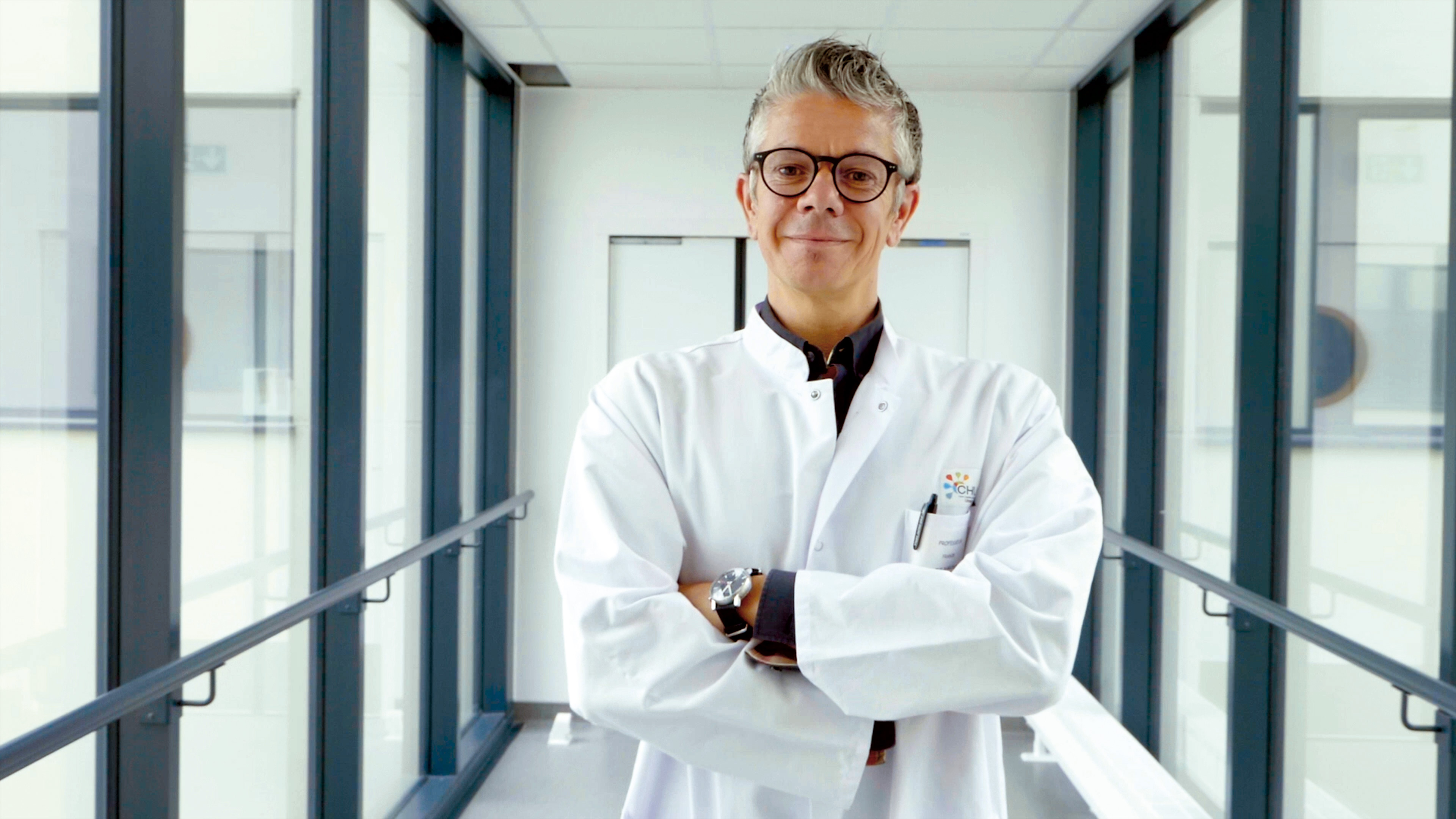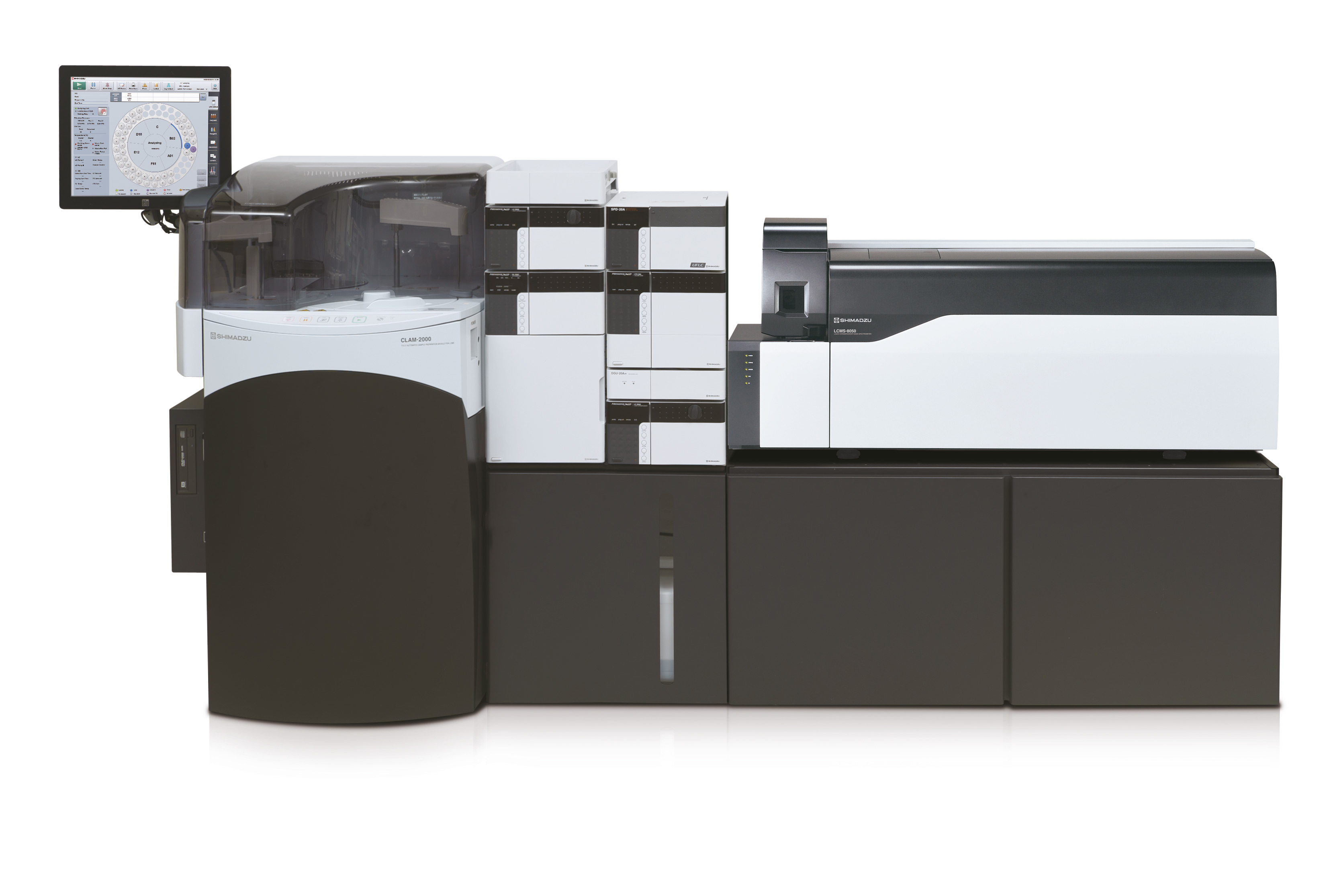Future of mass spectrometry in toxicology screening
European Innovation Center – interview with Prof. Saint-Marcoux, Limoges University Hospital (France)
 Prof. Saint-Marcoux, Limoges University Hospital, France
Prof. Saint-Marcoux, Limoges University Hospital, France
Franck Saint-Marcoux (PharmD, Ph.D) holds the position of full Professor of Toxicology and is currently responsible for the Clinical and Forensic Toxicology Unit of the Pharmacology and Toxicology Department of the Limoges University Hospital (France). He obtained a Master’s degree in analytical chemistry, a Master’s degree in Advanced Studies in Pharmacy and a PhD in Pharmacokinetic Modelling in 2004. He is author or co-author of over 70 papers in peer-reviewed international journals and has presented at about 50 conferences and international events.
Since April 2017, he has worked with the Shimadzu European Innovation Center in the clinical division to develop tools for implementing tandem LCMS in toxicology.
Prof. Saint-Marcoux, can you outline the research you are conducting in general? What is the current state-of-the-art?
We have clinical toxicology and forensic toxicology activities in the lab. This covers numerous fields: accidental exposures to drugs or to toxic compounds, self-poisonings, suspicions of overdose, monitoring of addicts, driving under the influence of drugs (DUID), doping controls… In each situation, it is the responsibility of the toxicologist to ensure an unambiguous identification of xenobiotics involved (when indications are absent), to be able to measure toxicologically high concentrations or to have very low limits of detection, and to provide quantitative results. Most of the time, this has to be possible on a 24/7 basis, with a rapid sample analysis.
However, targets are continuously changing! There are always news drugs for which Therapeutic Drug Monitoring is necessary, i.e., individual dose adjustment based on measurement of the drug in blood. There are also always new illicit drugs to survey. This explains why we are continuously conducting research to develop pertinent, modern, practical and efficient analytical methods, mainly using LC-MS or GC-MS.
Can you describe the research you are doing at the European Innovation Center with Shimadzu?
Globally, the research we are doing at the European Innovation Center consists of the development of innovative analytical methods in the field of toxicology. Since the beginning of our collaboration, our efforts have focused on the development of screening procedures using the LCMS-8060 system.
In a first approach, a spectral library has been developed for the Shimadzu LC-MS/MS platforms. It contains over 8,000 MRM transitions for 1,280 certified reference standards (including 37 deuterated internal standard compounds) with 6,084 registered spectra including positive and negative ionization modes. This library uses product ion spectrum data that can be used in routine library searching and compound verification using reference library match scoring.
One originality of the approach is that we use a novel spectral acquisition method that allows “reconstruction” of a spectrum containing all the specific transitions of a molecule. It is the so-called “MRM spectrum mode.” Unlike other approaches previously published where two or three collision energies were applied to all molecules in a method using product ion scanning, we have optimized collision energy for up to 15 transitions from a molecule. This approach makes it possible to obtain extremely specific and rich spectral information.
Currently, we are conducting research to evaluate the quantitative performances of a screening procedure based on this library. More precisely, we are developing a method for most commonly observed compounds, including antidepressants, anxiolytics, drugs of abuse, analgesics and antipsychotics, and testing its performances at infra-therapeutic, therapeutic and toxic concentrations in a quantitative approach. First results are promising and we are close to be able to propose a first procedure.
Meanwhile, we are developing fully automated extraction methods carried out by the CLAM-2000 programmable liquid handler, coupled directly to an LCMS-8060 system. A first method has been developed for the determination of 42 amphetamines, cocaine and opiates. These works have been recently submitted for publication.
 CLAM-2000
CLAM-2000
Why are you interested in this research? What is the goal? Why is it important?
A screening is the first analysis performed when the nature or the presence of a drug is totally unknown, which is often the case in clinical and forensic toxicology. Usually, a screening precedes more specific analyses allowing the quantitation of detected compounds. Procedures that allow both detection and quantitation are awaited.
Additionally, the implementation of automation for all or part of the analysis process eliminates technical errors made by manual preparation and saves time in the laboratory enabling technicians to perform other manual tasks while the system performs the analysis automatically.
How are Shimadzu instruments helping you in your research?
The LCMS-8060 system is a powerful tool with high intrinsic performances. Whatever the application we have yet developed, no loss in sensitivity by acquiring data in MRM Spectrum mode has been observed compared to conventional 2 MRM per compound. For example, with the method for the determination of illicit drugs, the dwell time and pause time for data acquisition are typically 3 ms and 1 ms, meaning maximum sample loop time is less than one second even at the most intense region of overlapping compound elution. At this point in time, 220 MRM can be measured simultaneously while still achieving an average of 20 data points measured across a peak.
The CLAM-2000 is the first system that having procedures where no human intervention is necessary when the primary tube is loaded on board the system. Sample preparation is synchronized with the LC-MS/MS system resulting in no time being lost whilst maintaining the ability to prepare the sample on-line and to inject directly immediately after preparation.
What are Shimadzu’s strengths compared to other vendors, not limited to instruments?
Through the European Innovation Center, Shimadzu is the first company who proposes an actual and effective collaboration with us. This is a win-win and exciting partnership!
All works are under the supervision of both the Department of Pharmacology and Toxicology of the Limoges University Hospital and Shimadzu Corporation, namely Stephane Moreau, Duisburg, Germany, and Alban Huteau, Marne-la-Vallée, France. The overseas Mass Spectrometry Business Unit of Shimadzu Corporation, with Neil Loftus and Alan Barnes, is also greatly involved in these developments. An important point is that we have with Tiphaine Robin a PhD student who is fully dedicated to the project.
Could you share any requests for Shimadzu for support or technology that would help improve your processes or research, even if these requests may be difficult to fulfill at this moment?
We have multiple projects in mind, such as the development of analytical methods on an upcoming QTOF system, or the development of analytical methods based on microsampling Wing devices. Unfortunately, we need more people. One potential solution would be to share a second Ph.D student with Shimadzu.
Take a look into the future: What will happen in the clinical and forensic fields and how will the change influence analytical instruments such as Clinical MS, and clinical procedures in ten years?
In a near future, we will face multiple challenges at the pre-analytical, analytical and post-analytical steps.
Firstly, devices that are less invasive than usual blood samplings, or that allow patients to sample themselves, will become more and more common. This implies that we will increasingly face new kinds of samples: dried blood spots (DBS), oral fluids, microvolumes of blood… Nowadays, blood samples are usually not less than 50 to 100 µL. If we anticipate that modern sampling strategies will systematically lead to samples of less than 5 µL, you can imagine the gain in sensitivity which we will need.
Secondly, more and more drugs will belong to the field of “personalized” or “targeted” medicine. This will imply the development of sophisticated analytical methods such as the nano-surface and molecular-orientation limited (nSMOL) methods that Shimadzu has developed for the measurement of monoclonal antibodies therapeutics.
In the meantime, we have to imagine highly efficient laboratories where the simplicity of operation and the minimization of user involvement in the sample preparation process will be our watchwords. For this, the CLAM-2000 will be very helpful. But, considering my previous remarks, the system will have to be flexible enough to treat multiple kinds of samples. I will need to provide it with DBS or with microtubes, and to ask for different kinds of extraction procedures.
Very often, the time dedicated to treat/check the data is not considered, although it is a key point. You can’t transform any high throughput lab into an efficient lab if you don’t have software helping you to rapidly deliver results. Most of the time, I see in my lab pretty nice methods with automated extraction procedures and extremely shortened analytical runs, but for which hours and hours are still spent checking the data. Are the calibration curves ok? Are the internal standards areas ok? Are all peaks well integrated? Are the internal quality controls ok? We definitely need tools that answer these questions automatically and drive us safely, just as new cars can drive us safely on a highway!